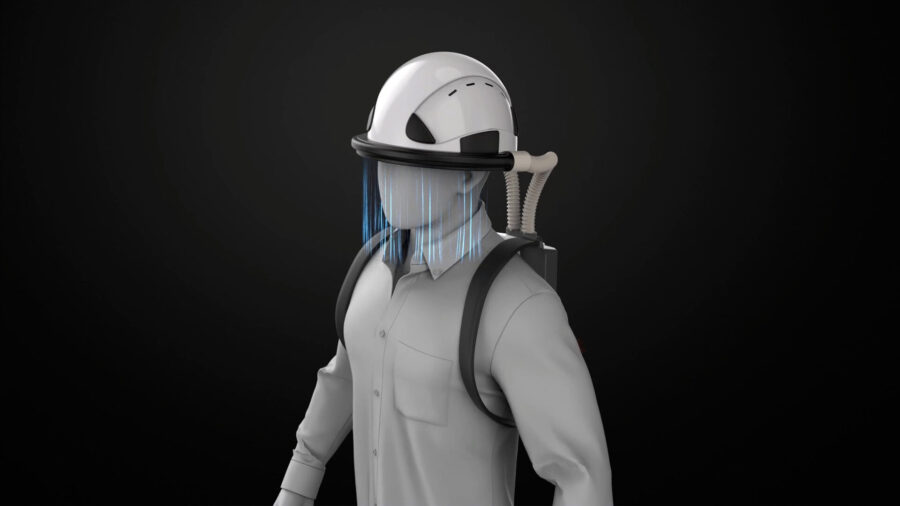A new wearable device that creates an invisible air curtain around the face could offer unprecedented protection against airborne diseases. Developed by University of Michigan startup Taza Aya, this technology blocks nearly all aerosols from reaching the wearer’s face, potentially revolutionizing worker safety in high-risk industries.
Independent testing has confirmed the effectiveness of Taza Aya’s air curtain system. The device, which attaches to a hard hat, shoots a stream of treated air downward from the brim, creating a protective barrier around the face. This innovative approach not only blocks incoming particles but also neutralizes pathogens in the air itself.
Beyond Simple Filtration: Pathogen-Killing Technology
The key to Taza Aya’s system lies in its ability to not just filter, but actually deactivate airborne threats. Co-founder Herek Clack, an associate professor of civil and environmental engineering at U-M, explains:
“Our air curtain technology is precisely designed to protect wearers from airborne infectious pathogens, using treated air as a barrier in which any pathogens present have been inactivated so that they are no longer able to infect you if you breathe them in. It’s virtually unheard of—our level of protection against airborne germs, especially when combined with the improved ergonomics it also provides.”
The device uses non-thermal plasma, a technology that creates highly energetic, electrically charged molecules to neutralize pathogens without generating heat. This treated air then stabilizes, becoming safe to breathe before reaching the user.
Addressing Real-World Challenges in Agriculture
Taza Aya’s invention comes at a critical time. The COVID-19 pandemic highlighted vulnerabilities in industries like agriculture, where close-quarter work environments can lead to rapid disease spread. Traditional masks, while helpful, come with significant drawbacks in these settings.
Tina Conklin, vice president of technical services at Michigan Turkey Producers, where the device has been tested, notes: “During COVID, it was a problem for many plants—the masks were needed, but they prevented good communication with our associates.”
The air curtain system avoids issues like fogged safety goggles, muffled speech, and the need to remove protection during meals. It consists of a 10-pound backpack housing the plasma module, air handler, electronics, and battery pack.
Taza Aya plans to launch its “Worker Wearable” in 2025. CEO Alberto Elli states, “We are pleased with the study results as we embark on this journey. This real-world product and user testing experience will help us successfully launch the Worker Wearable in 2025.”
As airborne health threats continue to evolve, from COVID-19 variants to recent cases of human bird flu infections, Taza Aya’s technology offers a promising new tool in the fight against respiratory disease transmission. By combining cutting-edge science with practical design, this invisible shield could transform workplace safety across multiple industries.
If our reporting has informed or inspired you, please consider making a donation. Every contribution, no matter the size, empowers us to continue delivering accurate, engaging, and trustworthy science and medical news. Independent journalism requires time, effort, and resources—your support ensures we can keep uncovering the stories that matter most to you.
Join us in making knowledge accessible and impactful. Thank you for standing with us!

